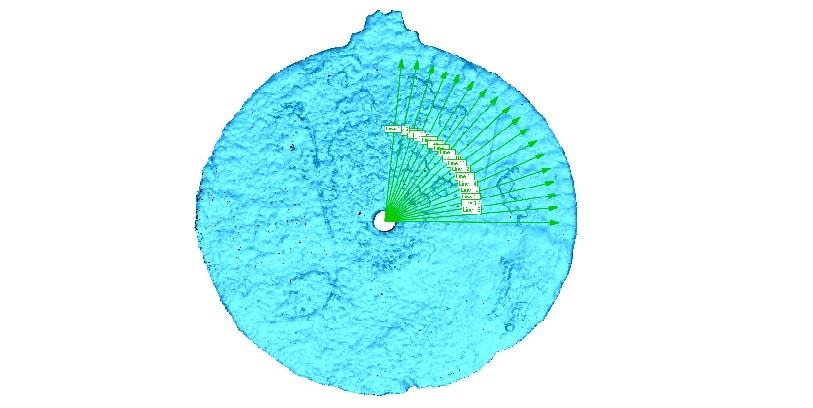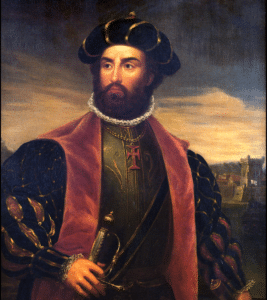Life
Shipwreck Yields Earliest Navigational Tool from Vasco da Gama’s Voyage

Scan of the astrolabe artefact, revealing the etches
University of Warwick
The astrolabe features a Portuguese royal coat of arms and an etching of an armillary sphere.
A 500-year-old navigational tool called astrolabe has been found in the shipwreck of Esmeralda, which was part of the second voyage of Portuguese explorer Vasco da Gama, the first European to reach India by sea, in 1502-03. The ship, led by his maternal uncle, sank in 1503. The remains were found off the coast of Oman in 2014.
Scientists were able to see small faded measurements etched into the bronze disk, measuring 17.5 cm in diameter, thanks to 3D scanning technology. The artifact is believed to be the earliest known object from the European Age of Exploration. It was used by mariners to measure the altitude of the sun.
The object features a Portuguese royal coat of arms and an etching of an armillary sphere, indicating that it belonged to Don Manuel I, the king of Portugal from 1495 to 1521. It was excavated in 2014 by Blue Water Recoveries.
“The markings were very fine and, due to damage to the surface, almost invisible to the human eye,” Mark Williams, a professor at the University of Warwick, said. The resolution of the 3D data allowed the team to zoom in and identify the marks and subsequently characterize them.

Vasco da Gama
“It was fantastic to apply our 3D scanning technology to such an exciting project and help with the identification of such a rare and fascinating item.
“Usually we are working on engineering-related challenges, so to be able to take our expertise and transfer that to something totally different and so historically significant was a really interesting opportunity,” added Williams, who had flown to Oman with a team of engineers to scan the astrolabe.
Vasco da Gama was the first explorer to find a route to India through the Horn of Africa in 1501 as an alternative to the path controlled by Arab rulers to the country. He began his journey with 20 fleets during his second voyage to India around 1502-03.
The Esmeralda was one of them. It is believed to have got sunk in 1503 due to a storm.
“We really don’t know much about early astrolabes, so this one is precious from that viewpoint,” said Luis Filipe Viera de Castro, a professor of nautical archaeology at Texas A&M University.

You must be logged in to post a comment Login